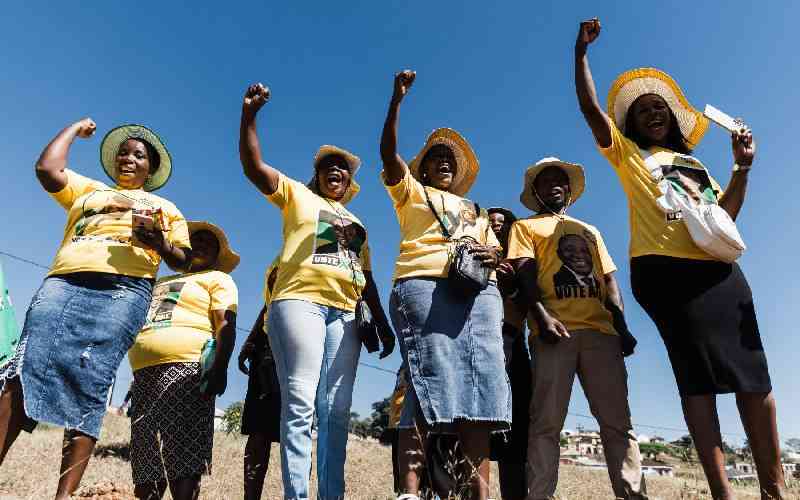
South African bank Absa said on Monday its full-year headline earnings dipped by one per cent in 2018, when taking into account 3.2 billion rand (Sh22.2 billion or $221.77 million) in costs related to its separation from British lender Barclays.
Absa, which has re-branded and renewed its strategy as a standalone African bank after separating from Barclays in 2017, announced a final dividend of 11.10 rand per share, up four per cent from the previous year.
However, when taking into account the divorce from its parent, headline earnings per share (HEPS) decreased and costs rose by eight per cent and its return on equity fell to 13.4 per cent.
HEPS - the key profit measure in South Africa - stood at 1,703.7 cents in the year ended December 31, compared with 1,724.5 cents in 2017.
The bank was pleased with its improved momentum in 2018, a year which saw “almost unprecedented” activity for the bank and a “challenging backdrop”, said Rene van Wyk, interim CEO, Absa.
“With major changes bedded down in 2018, the framework for the business has been reset,” he said, adding it can now deepen efforts to deliver against its ambitions.
Absa - one of South Africa’s biggest lenders and a prominent brand across southern and eastern Africa - is hoping a new CEO, an aggressive strategy overhaul and restructuring can reset its performance, which has lagged behind competitors and left investors sceptical.
Once South Africa’s largest consumer lender, Absa’s retail offering, which contributes more than half of overall revenue, has lost market share in recent years.
While the South African retail division grew lending and deposits, higher impairments in some units, including auto loans, resulted in earnings growth of two per cent.
A 76 per cent surge in impairments - the result of exposure to one large single name - also dragged earnings lower by one per cent in its corporate and investment bank, where costs exceeded revenue growth.
Absa also wants to double its share of revenue elsewhere in Africa from six per cent to 12 per cent in the medium-term, joining peers such as Standard Bank in turning towards fast-growing economies elsewhere in Africa in the face of economic stagnation at home. The lender’s operations outside of South Africa grew earnings by nine per cent.
 The Standard Group Plc is a
multi-media organization with investments in media platforms spanning newspaper
print operations, television, radio broadcasting, digital and online services. The
Standard Group is recognized as a leading multi-media house in Kenya with a key
influence in matters of national and international interest.
The Standard Group Plc is a
multi-media organization with investments in media platforms spanning newspaper
print operations, television, radio broadcasting, digital and online services. The
Standard Group is recognized as a leading multi-media house in Kenya with a key
influence in matters of national and international interest.
 The Standard Group Plc is a
multi-media organization with investments in media platforms spanning newspaper
print operations, television, radio broadcasting, digital and online services. The
Standard Group is recognized as a leading multi-media house in Kenya with a key
influence in matters of national and international interest.
The Standard Group Plc is a
multi-media organization with investments in media platforms spanning newspaper
print operations, television, radio broadcasting, digital and online services. The
Standard Group is recognized as a leading multi-media house in Kenya with a key
influence in matters of national and international interest.









